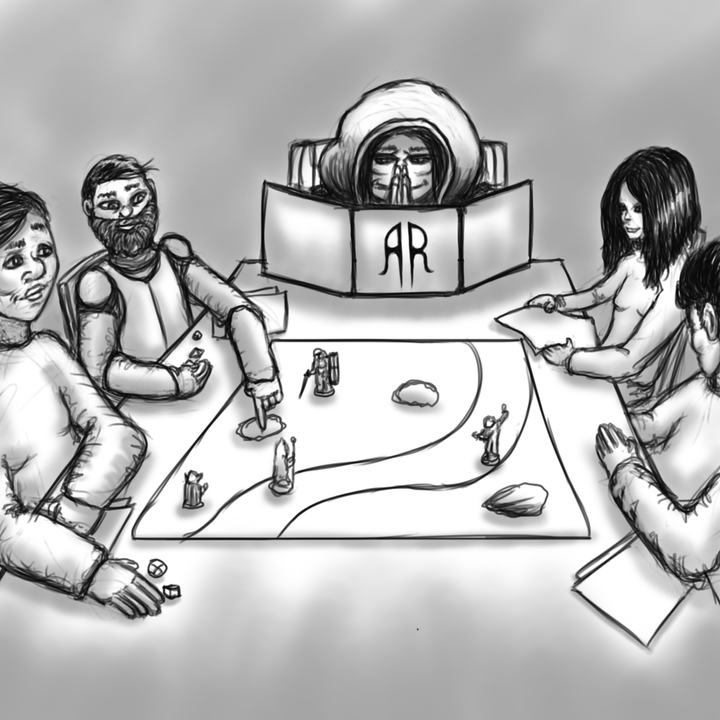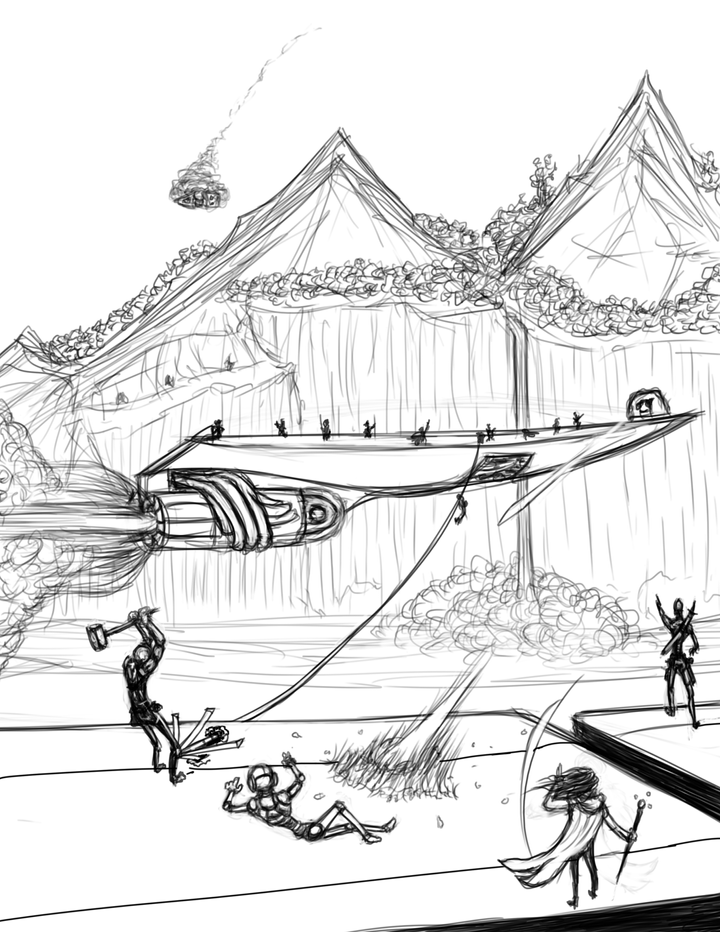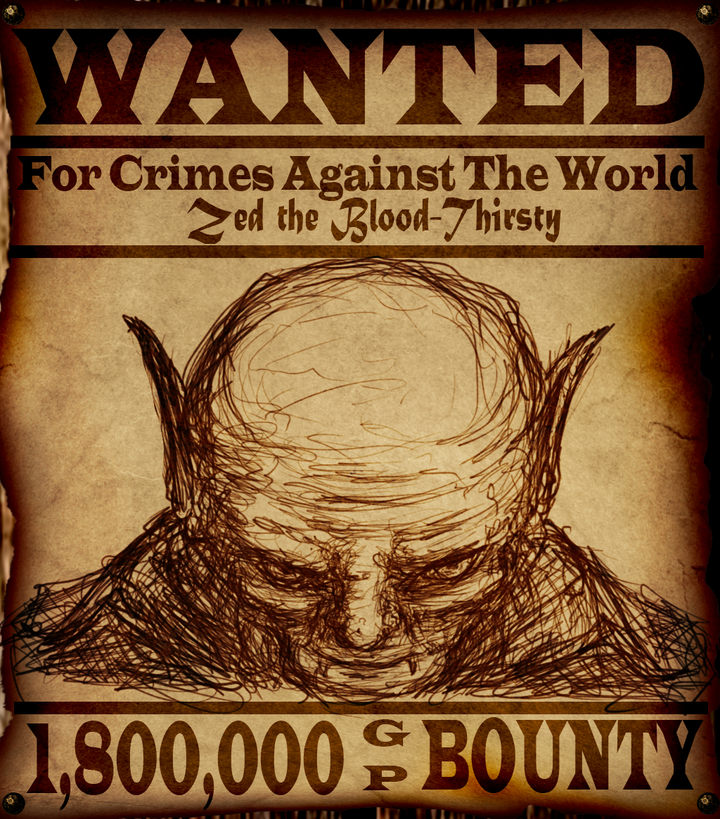Ranged Combat
When a player wishes to make a Ranged Attack they first must get within range for the Weapon they are wielding or Spell they are using. Then they Expend a Ranged or Spell Attack Action and make a Ranged or Ranged Spell Attack vs their selected target’s AC, Applying any modifiers such as Cover, Lighting and Weather Conditions. If the Attack Roll Meets or Exceeds the Target’s Modified AC the Attack is considered to Hit and the Attacker may roll their damage with any modifiers offered from Inspiration, Situation, Buffs, Active Abilities, Spells or Maneuvers and Apply any Hit Effects listed on the Spell, Maneuver or Ability.
If The Roll does not Meet or Exceed the Target’s Modified AC the Attack is considered to miss.
If it is a Near Miss it is possible the attack will deal damage to the cover, potentially destroying it and removing the AC Bonus it offers
Additional Ranged Attack Actions in a Single Turn
Many characters gain access to additional Melee and Ranged Attack Actions through their Archetype or XP purchases. Whereas there is no Attack Roll penalty for using additional Melee Attack Actions in a single Turn, there is for Ranged Attacks. Each additional shot taken in a single turn adds +1 to the Aim Penalty for that and all subsequent shots.
Near Miss
Attacks that Miss by a Value Equal to or Less than the AC Bonus granted by a Target’s Cover are considered to hit and deal their Damage to the target’s current Cover, rather than Missing as normal.
Cover
When utilizing Ranged Weapons or Ranged Spells there will be an additional Defense Modifier if the target of your ranged attack is behind cover of some kind.
Cover is defined as an object which significantly covers the creature's profile and is sufficiently dense to stop deadly projectiles.
Any Object or Structure 1 Size Category Larger than a Creature is considered to be Partial Cover for that creature.
Any Object or Structure 3 Size Categories Larger than a Creature is considered to be Full Cover for that creature.
A creature is considered to be behind cover relative to the Firing Creature as long as the Cover Intersects a Straight Line between the Aimer and Target’s locations.
Partial Cover
Also referred to as ½ Cover, the target is mostly visible but has something to duck behind. In these instances the target is considered to have an additional +2 to AC. Attacks that Miss by 2 or less are considered to hit and damage the cover, potentially destroying it if enough damage is accumulated. See the material resistance Table for Cover HP values.
Full Cover
The target is mostly covered and only small parts are visible at a time. In these instances the target is considered to have an additional +4 to AC. Attacks that Miss by 4 or less are considered to hit and damage the cover, potentially destroying it if enough damage is accumulated. See the material resistance Table for Cover HP values.
Firing Within in Melee Range
Most ranged weapons cannot be fired at adjacent targets without penalty. This is considered to be a Point Blank Shot and unless an Ability or Traits you possess states differently, always Provokes a Reaction Attack from all adjacent enemy combatants, if any of those Reaction Attacks Hit the Ranged Attack Roll is made with Disadvantage.
Friendly Fire
If you’re trained to use your ranged weapon there’s no chance of you hitting your allies or non target creatures or objects near your target, however, if there is anything you do not wish to hit within 1 Meter of a Ranged Attack Target you receive a -2 penalty to Hit due to the obstruction in the line of fire.
Line of Sight
In order to target a creature with a ranged attack without penalty, you must have a clear line of sight to your target. Obstructions such as foliage and smoke can obscure line of sight. Any attack made vs a creature without a clear line of sight is made with disadvantage.
Line of Effect
In order to hit a creature with a ranged attack a clear line of effect is needed. A straight or diagonal 1 meter wide line with no substantial obstructions between you and your target is considered a clear line of effect.
In Range
Ranged weapons have optimum and maximum ranges listed on each individual item. When firing a weapon outside of its optimum range but still within its maximum range the attack is made with Disadvantage and there is a -2 range penalty to Damage. Ranged weapons are incapable of targeting creatures outside of their maximum range. Some long range weapons have a minimum range that is also listed on the weapon, firing closer than this listed range on these weapons incurs a Disadvantage range penalty to hit.
Breath, Blast and Explosive Attacks
Certain attacks and spells will list an area that the spell effects and a shape that area will take.
The Area is how many map tiles the effect will travel from the Creature and the Shape indicates how the effect spreads out across the game map.
Creatures caught in these areas must pass the Effects listed saving Throw in order to Reduce or Possibly Avoid the Damage or Status effects caused by the Effect, Spell or Ability.
Effect Shapes
The list of possible effect shapes is as follows:
Arc
An Arc travels in a mostly straight line but can curve and bend by a Number of Meters Equal to its Area and travels as far as its range permits.
Cone
A Cone starts at the origin point at a single meter wide but adds a meter of affected area adjacent on either side for each meter it travels out from the caster. The area Indicates how far the origin point the Cone can travel and the range indicates how far from the caster the point of origin can be placed.
Beam
A Beam always travels in a straight unwavering line and the Area indicates it’s thickness in Meters and the Range indicates how far from the caster the beam can travel.
Blast
A Blast is a Perfect Square on a Grid Map and the Area listed is the Radius of the Blast and the Range is how far the Blast’s Center can be Placed from the Caster.
Spreading Hazards
Many magical and mundane effects have fairly consistent rates at which they spread, deal damage and behave. Fire will always spread on sufficiently dry or fuel filled materials, Electricity will always spread through conductive materials and Acid will always burn through certain materials at consistent rates. The Table below makes for an excellent go to reference for all such effects and hazards.
| Hazard | Spread Materials | Spread Direction and Rate | Maximum Spread Range | Damage Dealt and When | Hazard Duration |
|---|---|---|---|---|---|
| Fire | Flammable | All / 1 Meter Per Round | Infinite | 2d4 Burn Damage | Until Flammables are Consumed by Burn Damage |
| Electricity | Conductive | All / 2 Meters Per Round | 40 Meters from Power Source | 1d6 + 3 Electrical Damage | Surge = 3 Rounds Current = Infinite |
| Horfrost | Moisture Dense | All / 1 Meter Per Round | 20 Meters from Source | 1d8+2 Frost Damage | As long as Horfrost remains |
| Alchemist’s Fire | Anything | All / 1 Meter Per Round | 30 Meters from Source | 1d10+5 Burn Damage | 3 Rounds |
| Sulfuric Acid | Metals and Organics | Down(Gravity) / ½ Meter Per Round | 50 Meters from Source | 2d6 Acid Damage | Infinite |
| Ghost Fire | Living Creatures | All / 2 Meters Per Round | Infinite | 2d4+4 Necrotic Damage | Until Ghost FIre is Dispelled |



